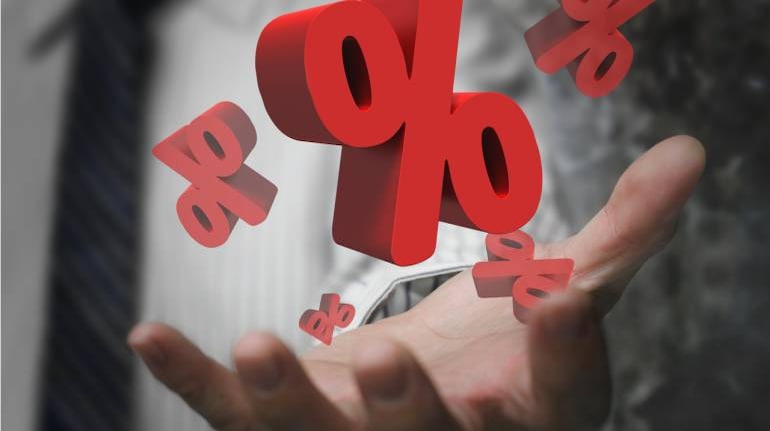



India’s benchmark 10-year government bond yields surged to a high of 6.66 percent before easing to 6.60 percent on Wednesday, January 19.
What has led to this spike? Factors including rising crude oil prices, risks to inflation and earlier-than-foreseen interest rate hikes signalled by the US Federal Reserve had set the stage for hardening bond yields. Logically, rising bond yields have triggered speculation that the Reserve Bank of India (RBI) may finally exit from its accommodative stance and start tightening interest rates.
Bond yields move in the opposite direction to prices.
Interest rates are inching up
“G-Sec yields have firmed up and deposit rates too are slowly climbing,” said D K Joshi, chief economist at the rating agency Crisil Ltd. Joshi added that a change in rate stance is imminent, “if the Omicron (a variant of COVID-19) turns out to be a transitory affair.”
Remember, RBI’s monetary policy committee (MPC) has adopted a prolonged accommodative stance in view of the slow recovery of the economy from the pandemic’s impact. It has so far ignored near-term inflationary pressures in a bid to support growth.
Yet, rising bond yields indicate interest rates will have to eventually harden, said Harihar Krishnamurthy, a market expert.
“Rate hikes may follow the market. And market rates have actually edged up anyway following global cues and the inevitable fallout of Indian inflation,” said Krishnamurthy.
A rate reversal is also possible due to the fact that Gross Domestic Product (GDP) growth and tax collections “look very good” and the impact of Omicron seems to be mild.
“So a change in stance followed by a reverse repo rate hike and then a repo rate hike is likely,” said Krishnamurthy. The repo rate is the rate at which RBI infuses liquidity into the banking system. The reverse repo is the rate at which RBI drains liquidity.
Inflation threat looming
Data shows inflation with an upward bias. A consistently high inflation rate can force the MPC to reverse the rate path. Already, there is a debate within the MPC on the future course of the inflation fight. One of the MPC members, Jayanth Varma, has long argued against the continuation of an accommodative stance, saying the efficacy of monetary policy in fighting the Omicron variant is limited.
India's headline retail inflation jumped to 5.59 percent in December, thanks to an unfavourable base effect. The MPC has the mandate to keep inflation within a broader target band of 2-6 percent.
The latest Consumer Price Index (CPI) inflation print in December was 68 basis points higher than the November level of 4.91 percent, data released on January 12 by the National Statistical Office showed. It is the highest inflation has been since July 2021, when it had also come in at 5.59 percent.
Despite the sharp increase in inflation in December, the average for the last quarter of 2021, at 5.0 percent, is marginally lower than expected. RBI had forecast CPI inflation would average 5.1 percent in October-December.
What next?
The next meeting of MPC will take place in February. The MPC may not yet hike the rates, but many expect a change in the policy stance, rating agency ICRA Ltd wrote in a note.
“Following the fresh uncertainty triggered by Omicron and the associated restrictions, the rating agency expects a status quo on the stance of the Monetary Policy as well as the reverse repo rate in the upcoming meeting of the MPC to be held in February 2022, in spite of the rise in the retail inflation in December 2021,” said the note.
To be sure, not everyone shares this view. According to Moragn Stanley Research, the MPC may increase the reverse repo in February to mark the start of policy normalization.
“We expect the February policy to mark the start of policy normalization with a reverse repo rate hike to normalise the policy rate corridor,” said the Morgan Stanley note.
Omicron concerns
The impact of Omicron will be key. In the last policy, the rate-setting panel had clearly spelt out its concerns on the spread of the variant.
“India is being lashed by global spillovers. The main conduit has been financial markets so far but the channels themselves are diversifying. The biggest risk of contagion is now from the new variant. Unless a clearer picture emerges on the near-term outlook, we must take guard and resume battle readiness again,” RBI Deputy Governor Micheal Patra said, according to the Minutes of the meeting.
RBI Governor Shaktikanta Das too voiced concerns on the Omicron factor. “There is growing uncertainty regarding the evolving global macroeconomic outlook,” Das said.
"The emergence of the Omicron variant may cast some shadow on the momentum of contact-intensive services that were just showing signs of recovery in recent months. The threat of Omicron is also imparting additional volatility to the financial markets," Das said.
With 2,82,970 new coronavirus infections being reported in a day, India’s total tally of COVID-19 cases rose to 3,79,01,241, which includes 8,961 cases of the Omicron variant, according to health ministry data updated on Wednesday. Active cases have increased to 18,31,000, the highest in 232 days.
Discover the latest Business News, Sensex, and Nifty updates. Obtain Personal Finance insights, tax queries, and expert opinions on Moneycontrol or download the Moneycontrol App to stay updated!